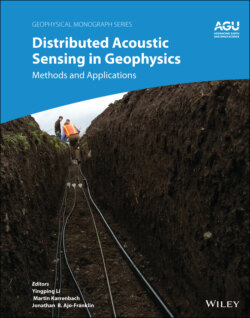Читать книгу Distributed Acoustic Sensing in Geophysics - Группа авторов - Страница 53
2.8. SUMMARY
ОглавлениеThis chapter discussed many unique aspects of acquiring DAS data. If possible, it is preferable to acquire data using single‐mode instead of multi‐mode fiber. Better SNR data are obtained with permanently cemented fiber cable, but it is still possible to obtain fit‐for‐purpose data using retrievable fiber deployment methods. Field engineers need to be trained to keep the fiber‐optic connections clean and the cable unbent. To obtain reliable DAS data, the IU should employ a differential phase scheme—nearly all current commercial systems use this method. It is important to ensure the timing information is preserved with DAS data; thus, GPS timing units will require appropriate access to an external antenna.
Gauge length continues to be an important decision. As discussed, a short gauge allows full fidelity of the resulting seismic signal, but a long gauge increases the SNR. As such, it is necessary to review the gauge length for the required data bandwidth. Pulse width can be easily chosen to match the gauge length to obtain the best illumination of the fiber. Fading is a natural feature of DAS acquisition and should always be addressed with both hardware and software. IUs using more than one light frequency are intrinsically better at reducing fading. Post‐acquisition processing can address fading, particularly for land data sets where multiple vibrator sweeps are collected. Common‐mode noise is caused by ambient sounds around the IU; therefore, keeping this area quiet helps prevent it. Further, simple post‐acquisition processing will remove most of it.
Determining the appropriate depth or location of each DAS channel is important for the accuracy of the resulting DAS products. One improved method is to use known locations as calibration points with the interleaving channels interpolated from them. The angle‐of‐incidence response of the fiber is different from that of geophones. It is important to first determine its effect, and then, where appropriate, remove it. DAS data quality is intrinsically lower than that from geophones; however, because there is frequently one or two orders of magnitude more density of information, the signal quality can be greatly improved. Finally, while the native measurement of a DAS system is phase, it can be converted to relative strain, strain rate, particle velocity, and an equivalent geophone response.
Figure 2.10 Relationship among the various products created from a DAS data set.
